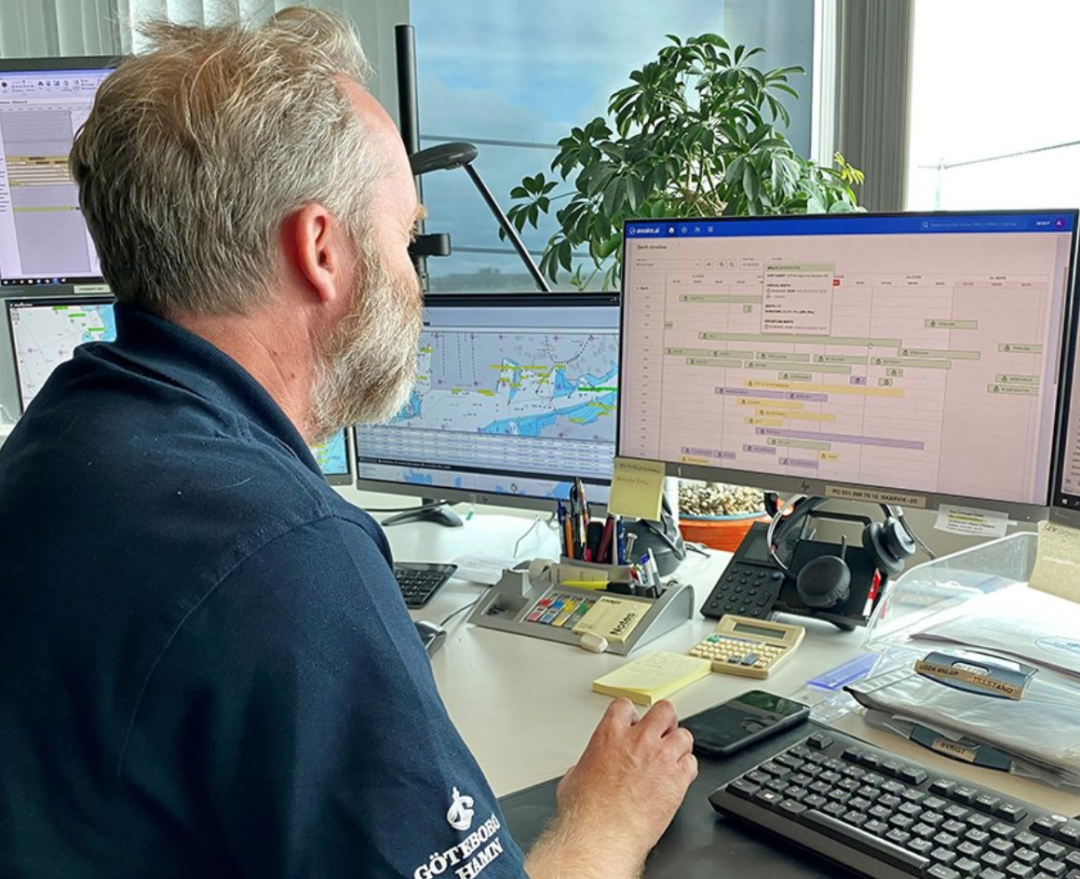Swedish seaport adopts digital berth planner
Finnish software quickly books vacant berths, Port of Gothenburg says.

Facing clogged container flows in global maritime operations, a Swedish port has launched a digital platform that it says can boost the efficiency of ships mooring at the dock to unload their cargo.
Sweden’s Port of Gothenburg says the “Allberth” berth planner tool has been rolled out to its Port Control division—which receives all calls at the facility—and to the safety and security coordinators at its Energy Terminal. The tool lets users quickly identify berths that are vacant and then act on that information, improving their resource planning, reducing waiting times, and leading to lower emissions.
The software product is the result of collaboration between the Finnish company Awake.AI, which is responsible for developing the service, and the Gothenburg Port Authority. Leaders say it will be the first step in the task of increasing transparency and visualization of the call system, as well as the ongoing digitalization of the port as a freight hub.
Other global ports have likewise been applying software tools to battle delays and congestion, such as Maersk Line and IBM Corp.’s blockchain-enabled digital shipping platform Tradelens and GE Transportation’s Port Optimizer maritime freight information portal, now used at the Port of Los Angeles and Port of Long Beach.
The new installation comes as ports worldwide face rising pressure due to disruptions such as covid outbreaks in China, winter peak imports in California, and lingering ripples from the Suez Canal blockage in Egypt.
While the Swedish tool is now being used solely by port controllers, external users will also gradually join the system. Allberth offers two-way integration, both for in-house use by berth planning personnel at the Port of Gothenburg and also for external use by the various parties involved in calls.
“We can now use the same tool to examine the safety parameters to determine whether a ship can moor at a specific berth, to position the ship, and to plan the time,” Fredrik Rauer, traffic coordinator and project leader for Berth Planner at the Gothenburg Port Authority, said in a release.
“We can also show external parties the calls that have been coordinated with the terminal and the calls for which we only have an approved vessel notification. Without this status distinction, it will appear as if we have two or three moored vessels overlapping and an outsider would logically put this down to scheduling problems. With Allberth we can give mooring personnel, the ship’s agent, and the terminal the opportunity to act immediately on the information that we visualize in the application,” Rauer said.
The Port of Gothenburg is the largest port in Scandinavia, handling almost 30% of Swedish foreign trade including exports such as steel, vehicles, and forest products and imports in the form of consumer goods such as clothes, furniture, food, and electronics.
Related Articles

Copyright ©2024. All Rights ReservedDesign, CMS, Hosting & Web Development :: ePublishing